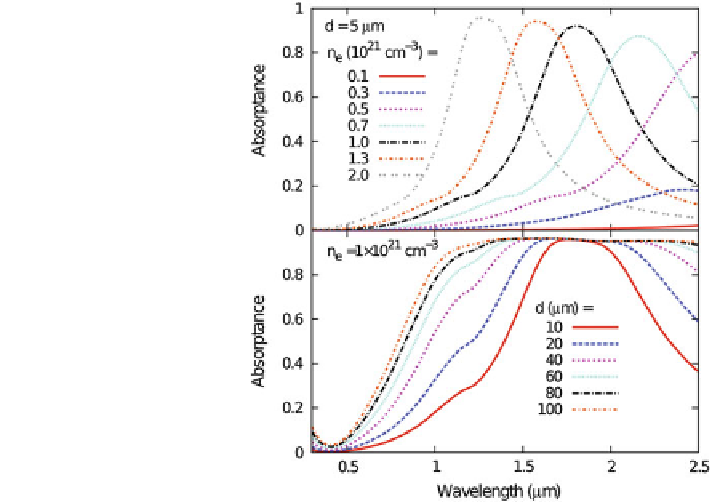Civil Engineering Reference
In-Depth Information
is passed through them. This phenomenon is utilized very successfully in ''self-
dimming'' rear-view mirrors for cars and trucks and is of interest also for other
applications mainly in the transport sector. Furthermore, reversible electroplating
offers possibilities to achieve a very large modulation of the optical transmittance
at all wavelengths. This option has been investigated intensely for many years but
has not yet led to practically useful devices (Ziegler
1999
; Laik et al.
2001
;
de Mello et al.
2012
). Recent work by Araki et al. (
2012
) on reversible electro-
plating has shown that it is possible to transition between transparent, reflecting,
and absorbing states.
Finally, very recent work has shown that the electron density of small
nanoparticles of wide band-gap oxide semiconductors can be modulated by
electrochemical means, and specific results have been demonstrated for nano-
particles comprised of ITO (Garcia et al.
2011
) and AZO (Buonsanti et al.
2011
).
This can lead to ''plasmonic'' electrochromism, whose theoretical limits were
investigated by Li et al. (
2012b
); results based on this latter work and pertaining to
ITO nanoparticles are reported next. Figure
19
shows spectral absorptance for
1 vol. % ITO nanoparticles dispersed in a medium representing typical glass or
polymer. The upper panel refers to a 5-lm-thick layer and shows that a strong
plasmon resonance shifts toward shorter wavelengths as the electron density goes
from 0.1 9 10
21
to 2 9 10
21
cm
-3
, where the upper limit corresponds approxi-
mately to the largest electron density that has been documented experimentally
(Granqvist
2007
).
The
lower
panel
reports
data
for
an
electron
density
of
1 9 10
21
cm
-3
and various layer thicknesses up to 100 lm. It appears that the
Fig. 19 Spectral absorptance
for a 5-lm-thick layer with
electron densities of 0.1 9
10
21
B n
e
B 2 9 10
21
cm
-3
(upper panel) as well as for
layers with thicknesses of
10 B d B 100 lm and
n
e
= 1 9 10
21
cm
-3
(lower
panel). The layer contains 1
vol. % of dispersed spherical
ITO nanocrystals. From Li
et al. (
2012b
)

